Transcription of Challenges for Using ICT in Education: Teachers’ Insights
1 Abstract A number of studies have argued that the use of new technologies in education is essential in the information age. The integration of information and communication technology (ICT) in teaching and learning provides more opportunities for teachers and students to work better in an information age. However, some barriers may discourage teachers to integrate ICT in the classroom and prevent them to introduce supporting materials through ICT usage. Examining the barriers for Using ICT in education can assist the educators to overcome the obstacles and integrate the ICT in everyday education . This study aims to investigate the teachers perceptions of the barriers and Challenges preventing teachers to integrate ICT in the classroom. Therefore, a validated questionnaire was administered to 30 high school English teachers who were selected from the five main educational districts in the city of Isfahan, Iran.
2 Stratified random sampling was used to select equal number of respondents from each educational district. The findings indicated that although teachers had a strong desire to use ICT in the classroom, they were encountered with some barriers. Insufficient technical supports at schools and little access to Internet and ICT were considered as the major barriers preventing teachers to integrate ICT into the curriculum. Moreover, the descriptive analysis of the results showed that shortage of class time was another significant barrier discouraging teachers to use ICT into the classroom. Index Terms Information and communications technology (ict), Challenges , barriers, insight, curriculum. I. INTRODUCTION Nowadays, the use of technology as a tool to develop the different language skills has received great attention so that English language teachers are frequently exposed to new practices [1]- [4].
3 Apart from curricular changes that come officially- usually from the Ministry of education in each country- workshops and short trainings introduce new techniques and activities or promote new materials. Accordingly, English language teachers are accustomed to frequent subject innovations, but not necessarily more resourceful or open to new ideas. The use of technology devices, such as televisions, tape recorders and video recorders have been incorporated as a tool for language teaching since 1960s. There was evidence of many problems in terms of technical skills at the beginning, and it took about a generation for the technical skills and the technical problems to be ignored out. However, teachers are faced with some barriers that prevent them to employ information and communications technology (ICT) in the Manuscript received January 16, 2012; revised February 17, 2012.
4 H. Salehi and Z. Salehi are with Faculty of Literature and Humanities, Najafabad Branch, Islamic Azad University, Najafabad, Isfahan, Iran (Corresponding author s email: classroom or develop supporting materials through ICT. Therefore, this study aims to explore the high school English teachers perceptions of the Challenges and barriers preventing teachers from Using ICT in the classroom. II. LITERATURE REVIEW A. Integration of ICT in Teaching and Learning The integration of ICT in teaching and learning is not a method; rather it is a medium in which a variety of methods, approaches and pedagogical philosophies may be implemented [5]. This statement shows that the effectiveness of ICT depends on how and why it is applied and integrated.)
5 In 1980, Taylor stated that ICT usage is classified to tutor, tool and tutee [6]. Tutorial programmes lead learners step-by-step through a programme such as drill and practice. Using technology as a tool can help other types of problems, for example, technology as a tool is frequently seen in tutorial or explanatory programmes [7]. ICT acts as a tutee where students programme the computers in order to gain more understanding. A number of different ICT tools and applications may be integrated in teaching and learning [8]. Some of these tools and applications may be designed specifically for educational purposes and some others for more general use. The choices of resources, and the way they are used, can be linked to different learning theories which may be invoked to explain or predict learning benefits from the use of ICT [9].
6 Roblyer and Edwards believe that the use of ICT in education has evolved from two main approaches, namely directed and constructivist instructional methods [10]. The theoretical foundations of directed instruction are based on behaviorist learning theories and information processing theory, which is a branch of cognitive psychology. The theoretical foundations of the constructivist approaches are based on the principles of learning derived from cognitive learning theory. B. Barriers for Using ICT in the Classroom The process of Using ICT in everyday education is very complicated. The opportunities provided by ICT to support teaching and learning are not problem-free. The virtually limitless opportunities of access to information in an educational context can pose a real danger of information overload if the teachers do not have the skills in filtering information for relevance, or are unable to establish a coherent organizing principle.
7 Both students and teachers may lack the necessity skills to access, process and use information [8]. Even there are a number of difficulties which act as barriers and prevent teachers to integrate ICT into the classroom. As Schoepp defines, a barrier is considered as any condition that makes it difficult to make Challenges for Using ICT in education : Teachers Insights Hadi Salehi and Zeinab Salehi 40 International Journal of e- education , e-Business, e-Management and e-Learning, Vol. 2, No. 1, February 2012 progress or to achieve an aim [11]. The educators have used different categories to classify the barriers for teachers to use ICT in the classroom. Some researchers have classified the barriers into two major categories of extrinsic and intrinsic barriers. Ertmer referred to extrinsic barriers as first-order and cited access, time, support, resources and training and intrinsic barriers as second-order and cited attitudes, beliefs, practices and resistance [12].
8 Al-Alwani defined extrinsic barriers as barriers which are related to organizations rather than individuals and intrinsic barriers as those which are related to teachers, administrators, and individuals [13]. Some other researchers grouped the barriers into two categories of teacher-level barriers and school-level barriers. Becta classified the barriers based on whether they refer to individual (teacher-level barriers), such as lack of confidence, shortage of time, and resistance to change, or to the institution (school-level barriers), such as lack of effective training in solving technical problems and lack of access to resources [14]. Balanskat et al. classified them into micro level barriers, such as those related to teachers attitudes and approaches to ICT, and meso level barriers, such as those related to the institutional context [15].
9 They also added a third group called macro level barriers, such as those related to the wider educational framework. Additionally, another group of researchers refer to the barriers as those pertaining to two types of conditions: material and non-material. As Pelgrum classifies, the material conditions refer to the insufficient number of computers or copies of software [16]. The non-material barriers refer to teachers insufficient ICT knowledge and skills, the difficulty of integrating ICT in instruction, and insufficient teacher time. In the US, the most important barriers to high school teachers use of ICT were insufficient number of computers, lack of free time for learning and lack of classroom time for students to use computers [17]. Teachers in larger schools and city schools were more likely to report lack of computers as a barrier and teachers in schools with high minority student populations were more likely to report outdated, unreliable computers as a barrier [17].
10 In a study in UK, Jones reported that lack of personal confidence and insufficient access to the ICT resources were the key barriers for majority of the surveyed teachers [18]. Some other factors which were more internal to the teachers such as resistance to change and lack of awareness of the benefits of the ICTs for learning were reported in Jones study. In the New Zealand, lack of time for professional development to learn about the new technologies and lack of time to explore technologies such as the internet and social networking services were repeatedly reported by teachers as the significant barriers for Using ICT in the classroom [19]. Other factors such as ICTs not being considered as important enough to be a priority, contentment with current approaches and lack of confidence to integrate ICTs in the curriculum were reported by the teachers as well.
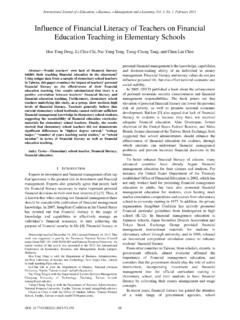
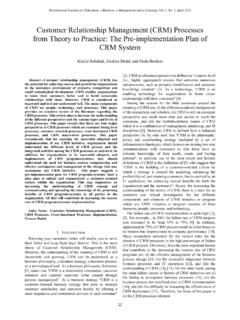
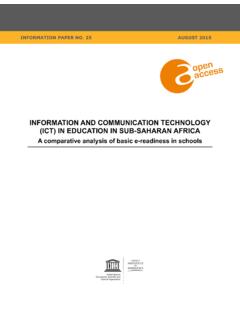

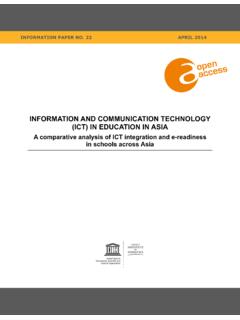



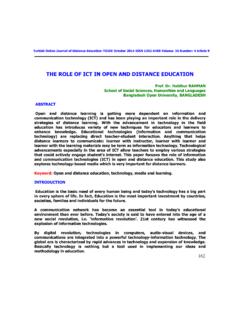
![ICT Integration In Education: [1] Faculty of Education ...](/cache/preview/6/7/b/2/4/7/2/c/thumb-67b2472c02ac37a675ff45eb7d293bba.jpg)